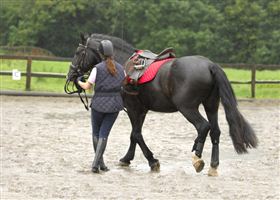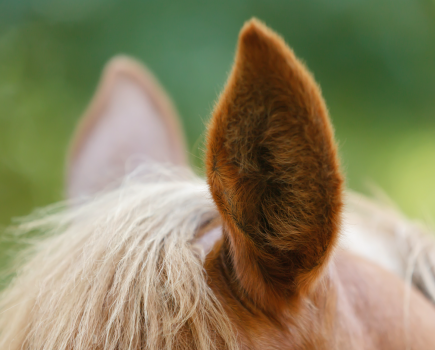 Some horses have a habit of flying out of their stables, through gateways or pushing past their owners, and there can be a number of reasons for this behaviour.
Some horses have a habit of flying out of their stables, through gateways or pushing past their owners, and there can be a number of reasons for this behaviour.
“Very often horses are afraid of moving through narrow gaps because of a past knock or bang to the hips,” Sarah Kreutzer advises. “This may have happened in a trailer or walking through a narrow gap and, after this, the horse will attempt to get through any small gaps quickly, resulting in behaviour very much like barging.”
This brings us straight to the ‘medical’. Make sure your horse isn’t in any physical pain from anything, including a previous knock or bang.
Think Nature
Usually in the herd, horses (and especially the unhandled foals) are extremely wary and respectful of our personal space. They don’t barge or push, instead they keep their distance, only approaching with caution if they feel secure enough to do so.
“Over-handled, homebred foals can often end up being very pushy. If they aren’t given proper boundries as foals, they’ll grow up thinking they don’t need them, and this can create a horse who will barge,” explains Sarah.
“Also, if we put an unhandled foal from the herd in a small space, they’d probably want to get out of there as soon as they can. Being in a confined area isn’t normal for horses, so naturally they’ll want to get out – and, for them the quicker the better!”
What are the signs that something is wrong?
Barging is a behaviour that happens on the spur of the moment. But that doesn’t mean it starts one day out of the blue.
Don’t forget that your horse may have been, or may currently be giving you, little signs that he’s not happy and spotting them early could prevent him from barging altogether.
For example:
- Reluctance to load, or move through narrow gaps
- You’re no longer in control of his feet
- He’s losing respect for your personal space
What can you do?
When barging is an issue you need to question – who’s moving who here?
“You should be able to lead your horse in a controlled manner without the fear of him rushing past or over you if he becomes scared,” say’s Sarah.
“Remember, if your horse is moving your feet, then he’s in charge.”
- Positioning – Make sure your horse is never made to face or pass something he’s frightened of too closely. Position yourself between him and the scary object to show him there’s nothing to be afraid of.
- Move his feet – You need to be able to move your horse’s feet. If you do that then you’re the leader. You’re acting like a mother figure, which will reassure him.
- Show him it’s safe – Your horse could be feeling insecure and his barging might be an attempt to get close to you so he feel’s safe. Take little steps towards the thing that’s worrying him to show that it’s safe for him to move nearer.
- Remember you contract – Don’t forget that by barging and being pushy, your horse is letting down his side of the bargain when it comes to your ‘contract’. As one of Sarah’s five key concepts, your horse should know that he shouldn’t walk over you in return for you not walking all over him. Take back the control by using your body language – not by force. If your communication gets louder, he will only do the same thing in return.
- Put boundries in place – Don’t be tempted to let your foals get away with murder becuase they’re small and cute. Put boundries in place early and stick with them from the point on. But don’t go to the extreme and treat a horse like a machine – remember they’re living, breathing, feeling animals just like us – let them keep their personalities.








